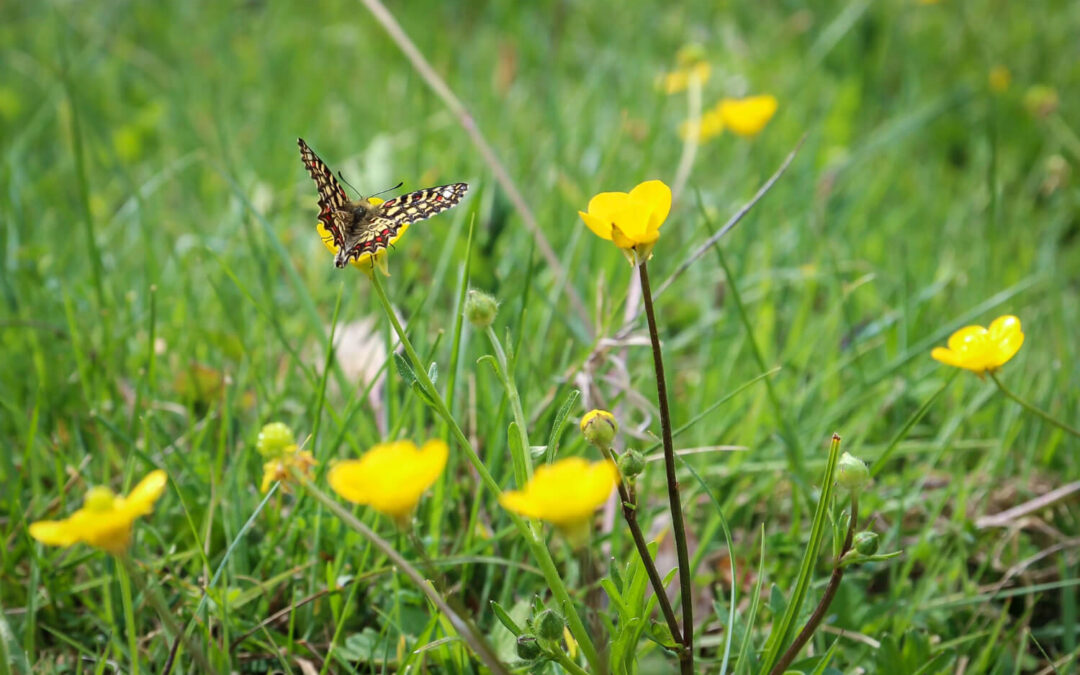As an experienced landscaper and the owner of a small business that deals with lawn maintenance, I know the The relationship between human beings and animals can be a double-edged sword sometimes. Certain animals like sheep or goats tend to benefit humans, providing us with wool and milk respectively, while others like wolves cause danger and bloodshed, often feeding on the domesticated animals that provide us with useful products.
This is also the case with lawn care. As any homeowner who maintains a well-kept yard can attest, some animals are highly desirable and even quite helpful to have on your property on a routine basis – while some are just plain destructive. While the latter category is full of creatures like moles and skunks that will rip your lawn up looking for sustenance, the former includes a host of beneficial species that contribute to a thriving ecosystem. With lawn care, the most desirable animals to attract are pollinators, such as honeybees, butterflies, hummingbirds, and most other types of birds, with some exceptions like geese, pigeons, and crows.
These helpful little critters play a crucial role in plant reproduction, help control pests naturally, and enhance the overall health and beauty of your lawn. That being the case, if you’d like to keep your yard healthy and lush, you’ll want to attract them. Through my years of being a professional turf care specialist, I have discovered a few easy ways to do that, and I’d like to share them with you.
Native Plants
One of the hallmarks of a wildlife-friendly lawn is the presence of native plants, which provide the food and habitat that these beneficial creatures need to thrive. Native plants come pre-adapted to your local environment, making them hardy and easy to maintain. They also attract native pollinators, such as bees and butterflies, by offering the nectar and pollen these insects are used to and rely upon. For example, in my home state of South Carolina, plants like Purple Coneflower, Black-Eyed Susan, and Bee Balm are excellent choices for native plants to complement your yard. Not only do these plants support and attract local wildlife, but they also add vibrant color and texture to your lawn, making it more beautiful while simultaneously supporting the ecosystem.
Bird Feeders and Birdbaths
To attract birds to your lawn, consider setting up some bird feeders and birdbaths. Different bird species are drawn to different types of seeds and foods, so offering a variety of food in the feeders can bring in a wider range of birds. For instance, hummingbirds love nectar feeders, while songbirds like finches and cardinals are mostly in the market for seeds. Additionally, Birdbaths provide a water source that can attract birds not only for drinking but also for bathing (as the name suggests), which is essential for keeping their feathers in good condition. Just be sure to clean and refill the birdbaths regularly to keep the water fresh and safe, otherwise, over time, the bath might do the birds more harm than good.
Avoid Using Chemical Pesticides
Finally, if you want to attract beneficial wildlife to your lawn, it’s important to avoid using chemical pesticides and herbicides. These harsh chemicals can be harmful to pollinators like bees and butterflies, as well as to birds that may ingest them indirectly. Instead, why not try using natural alternatives like compost, mulch, or even introducing certain helpful insects like ladybugs that prey on pests? These natural options also have the added benefit of being better for humans, especially small children. Maintaining a healthy lawn through proper mowing, watering, and fertilizing can also reduce the need for chemical treatments. Ultimately, a pesticide-free lawn will become a haven for all sorts of desirable wildlife, providing a lovely, healthy setting for them to visit.
So, there you have it! Some tips to easily encourage a wildlife-friendly lawn, courtesy of me, John Gulius, your trusty neighborhood turf care specialist.
